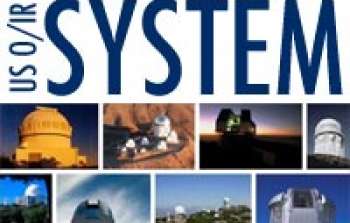sci09007 — Announcement
Toward an Integrated Ground-Based O/IR System
September 30, 2009
p>For more than a decade, the NOAO program has embraced the idea of a system of facilities that could be used to carry out scientific programs. The initial focus was on our own facilities—KPNO, CTIO, and the US piece of Gemini—but the 2000 decadal survey and events thereafter have broadened the thinking of the community to envision the combination of federal and non-federal resources into a much more capable and efficient system.
Through several “System workshops” and panels (ReSTAR, ALTAIR) that brought together users of the federal and non-federal facilities, we have been working with the community to identify and prioritize the capabilities that are in demand for future development. Some of these capabilities have been implemented through programs like the Telescope System Instrumentation Program (TSIP), and others will be developed through our NSF proposal to address the ReSTAR recommendations (see the December 2008 issue of Currents).
In anticipation of future development opportunities, the time appears ripe to take a more structured approach to system development that will foster the strategic evolution of the system. As part of this approach, the relationships among capabilities on facilities of different sizes (i.e., spanning a range in aperture and/or complexity) should play a role in determining their priorities. This would allow an evolution towards an integrated system.
An integrated system helps our community in several ways.
- Since the system includes facilities that span a range of apertures, the integrated planning that is needed for system development allows capabilities at one scale to be optimized, in part, to support capabilities at other scales.
- Limited resources can be used more efficiently and cost effectively through global optimization that will reduce the need for redundant capabilities where they are unnecessary.
- Because it allows for coordinated planning for more of the capabilities that are in the US system, the entire suite of capabilities can be more competitive at an international level.
- It would provide a context for the dialog among different segments of our community that is necessary for positive evolution of the system as a whole.
To meet this challenge, NOAO will be taking on three roles: (1) helping our community to understand the capabilities in the system and to use them effectively, (2) facilitating the creation of needed capabilities, and (3) working with the community (both federal and non-federal facilities and their user communities) to develop strategies for the future development of the system.
To better fulfill these roles, we are changing the internal structure of NOAO. Several existing programs will now be combined into two new programs: the NOAO System Technology Center (NSTC) and the NOAO System Science Center (NSSC).
The NSTC will carry out the technical and administrative aspects of system development. It includes Instrumentation, the administration of the TSIP program, LSST technology development, and GSMT/ELT technology development. The NSSC will assist users of the system with current facilities and understand their desires for the future. It includes System User Support (which includes the functions of the former NOAO Gemini Science Center), System Data Management (previously known as the Data Products Program), and System Community Development.
The newly formed System Community Development program has the goal of understanding community desires for the evolution of capabilities within the system and guiding its development to provide these capabilities. Foremost among its initial tasks will be to work with the community to create a roadmap for this development, one that integrates the needs of all segments of the community. This will require working closely with the entire community—both those who have access to (or operate) their own facilities and those who depend on the open-access process—in order to produce a plan that can be supported by everyone.
Your input is needed to make this effort a success. Watch Currents over the coming year for opportunities to participate in this process.
About the Announcement
| Id: |
ID
sci09007
|
